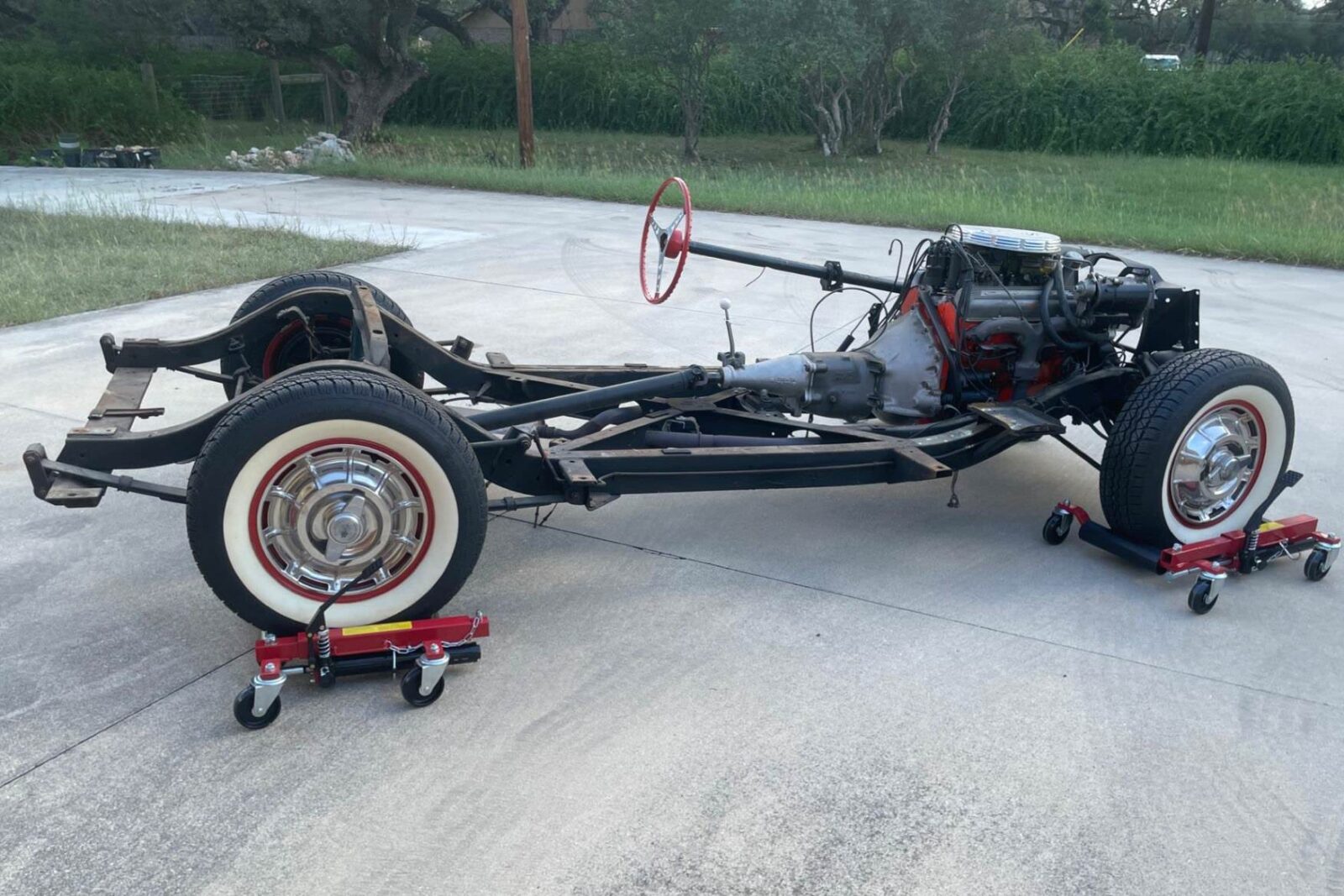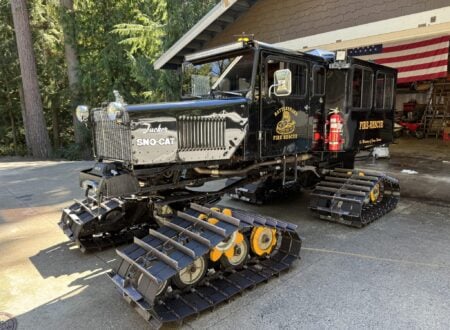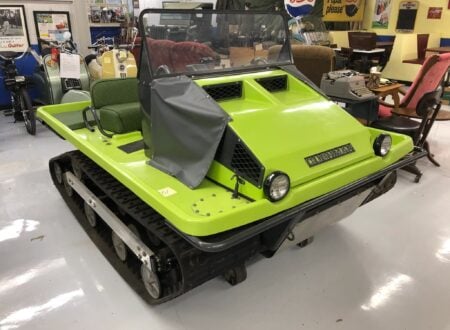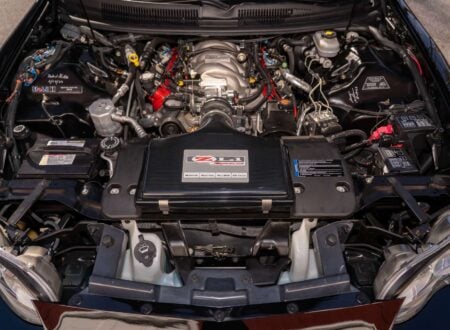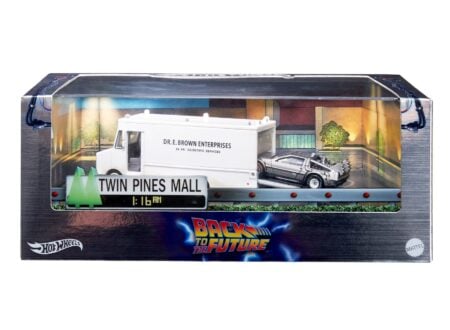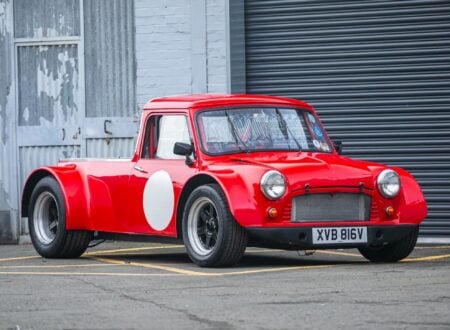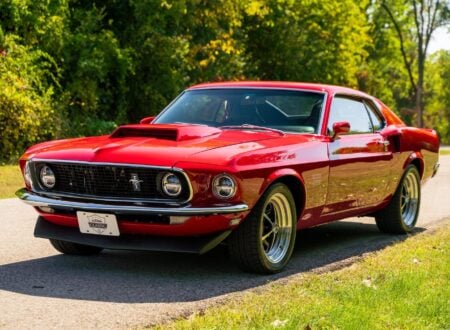This is the powered rolling chassis from a 1960 Chevrolet Corvette C1. The body was removed to go onto a modified chassis, and the chassis is now being offered for sale in the hopes that someone will fit a body and get it back on the road.
The Corvette is arguably America’s most important sports car, but it didn’t start out this way. When it first entered production in 1953 just 300 were offered for sale, and all were fitted with an inline-six engine and an automatic transmission – a far cry from the fire-breathing Corvette V8 manuals that would come later.
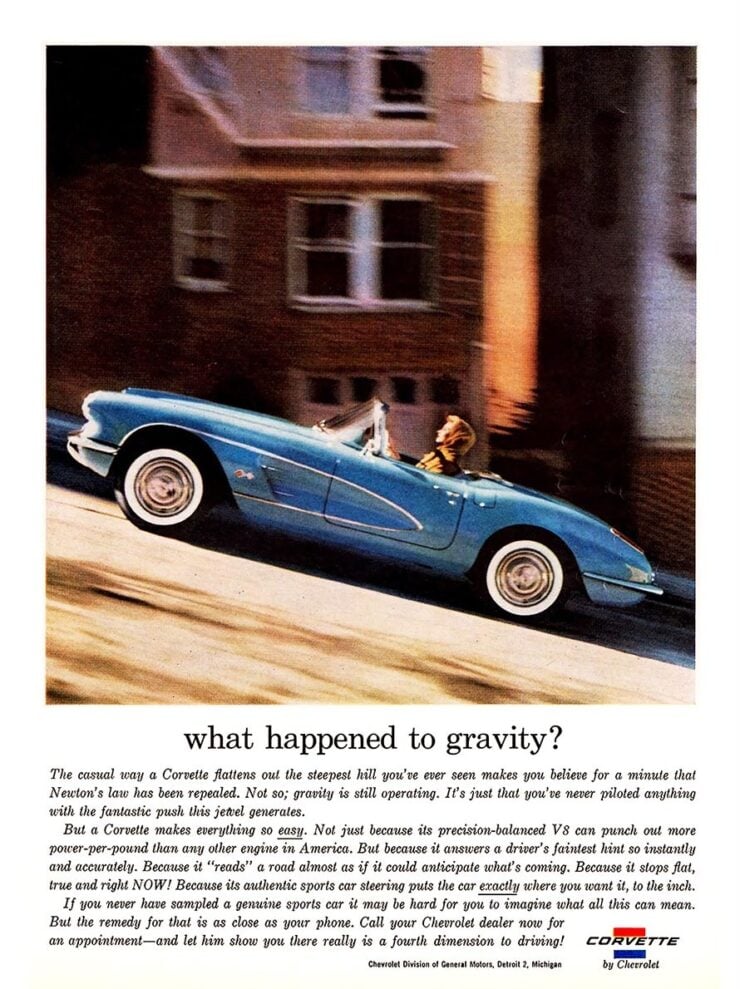

Harley Earl And The Corvette Conception
It might seem strange today, given the iconic status that the Corvette has achieved, but in its early history the two-seat American sports car was a slow seller, and General Motors executives very nearly cancelled the project altogether.
The key man behind the creation of the Corvette was Harley Earl, Head of GM’s Styling Section, and an avowed lover of sleek European sports cars.
The Second World War had seen almost two million US soldiers sent to Europe, and many of these young men returned to the US with a deep love of the small, lightweight sports cars they had seen there – from marques like MG, Morgan, Triumph, and the beautiful roadsters being built by Alfa Romeo.
After 1945 as these young men returned home many brought European sports cars with them, as there were very few American sports cars then on offer. The explosion in popularity of the American Hot Rod after the war can be partially attributed to this also.
A State-Of-The-Art Fiberglass Body
Harley Earl managed to get approval for his sports car project from General Motors, on the condition that he used as many off-the-shelf GM production parts as possible. As a result, the first generation Corvette used the chassis, engine, transmission, rear axle, suspension, brakes, steering rack, and more from other GM and Chevrolet production cars.
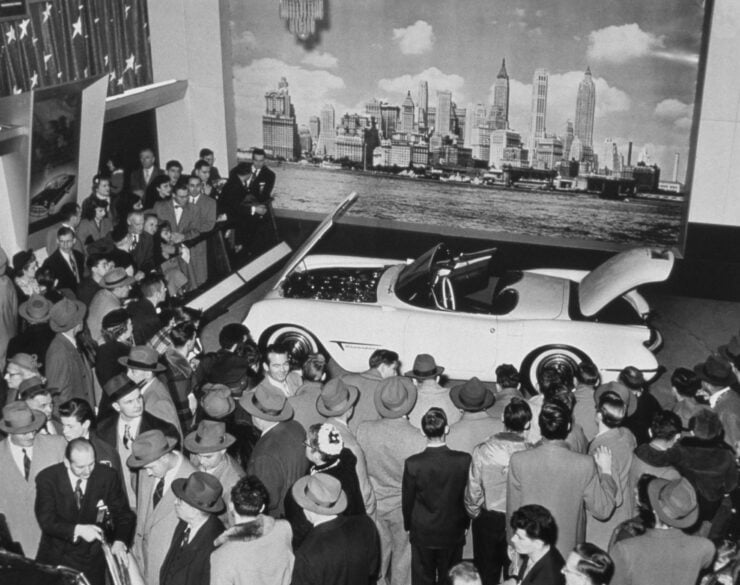

The one part that was completely different was the body. The first Corvette show car, the EX-122 pre-production Corvette prototype, was shown to the world for the first time at the 1953 General Motors Motorama at the Waldorf-Astoria in New York City on January 17th, 1953.
EX-122 was fitted with a fiberglass body, a revolutionary material at the time that has been described as the carbon fiber of the 1950s. Fiberglass had already been used on cars before, most memorably on the Glasspar G2 and the Kaiser Darrin, but the C1 Corvette would represent the first time it was put into true mass-production by a major automaker.
The plan had been to build a steel body from 1954 onwards, but this was changed relatively early on, and the Corvette would keep its fiberglass (and later plastic/composite) body panels right the way through to the current day.
The Three Things That Saved The Corvette
Due to the relatively poor performance of the 1953 and 1954 cars, with their inline-sixes, two-speed Powerglide automatic transmissions, and 11.5 second 0-60 mph times, sales were somewhat slow and well below GM’s expectations.
The project was almost cancelled but would be saved by a trio of events. The introduction of the all-new Chevrolet V8 engine in 1955, the arrival of the first (1955) Ford Thunderbird, and the fact that legendary racing driver and GM engineer Zora Arkus-Duntov would make it his mission to turn the Corvette into a truly world-class sports car, and keep it in production on a permanent basis.
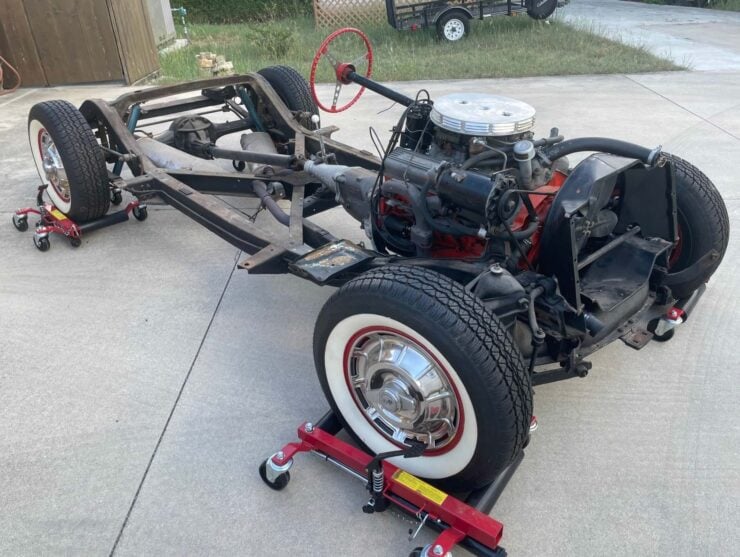

The first Corvette with a V8 engine would arrive on dealership showroom floors in 1955, along with a 3-speed manual transmission. For the first time the Corvette was a genuine performer, able to take on and beat many (if not most) of the sports cars coming out of Britain and Europe at the time.
The arrival of the Thunderbird, Ford’s sporting two-door convertible that was marketed as a “personal luxury car” would mean that if Corvette production was cancelled it would look to the public like Chevrolet had chickened out of a direct battle with Ford, their age-old arch nemesis.
Corvette sales would begin to rapidly increase after this, the performance would continue to climb and the appearance would be incrementally updated right the way through until it was replaced with the C2 Corvette after 1963.
The 1960 C1 Corvette Chassis + Drivetrain Shown Here
The rolling chassis you see here comes complete with the suspension, steering, and brakes all in place. It’s also fitted with a 283 cubic inch (4.6 liter) V8 mated to a 4-speed manual transmission.
The engine is said to have been sourced from a Chevrolet Impala, the listing notes that it was overhauled in 1987. It’s now fitted with a pair of Carter WCFB four-barrel carburetors, an intake manifold, an alternator, a Delco-Remy distributor, ribbed Corvette-script valve covers, and a louvered air cleaner assembly.
Power is sent back through a rebuilt 4-speed manual transmission, and the car rides on independent coil spring suspension on the front end, with a live axle that has radius rods and outrigger-mounted semi-elliptic leaf springs in the rear.
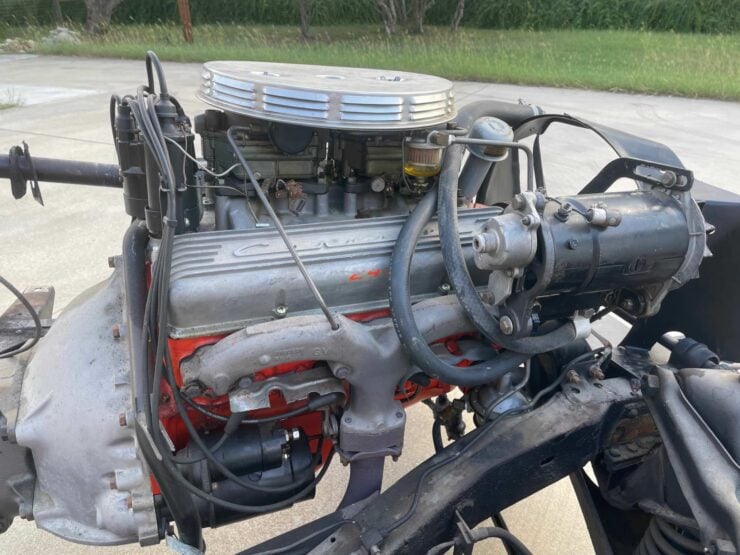

The car now needs a new body, but the good news is that you can buy brand new C1 Corvette fiberglass body panels online, though to be fair they don’t come cheap. One other option would be to buy an unused Kellison J6 Panther body – these were designed in-period to fit right over a C1 Corvette chassis.
If you’d like to read more about this rolling chassis or place a bid you can visit the listing on Bring a Trailer here. It’s being offered for sale out of Boerne, Texas with spare parts and a bill of sale.

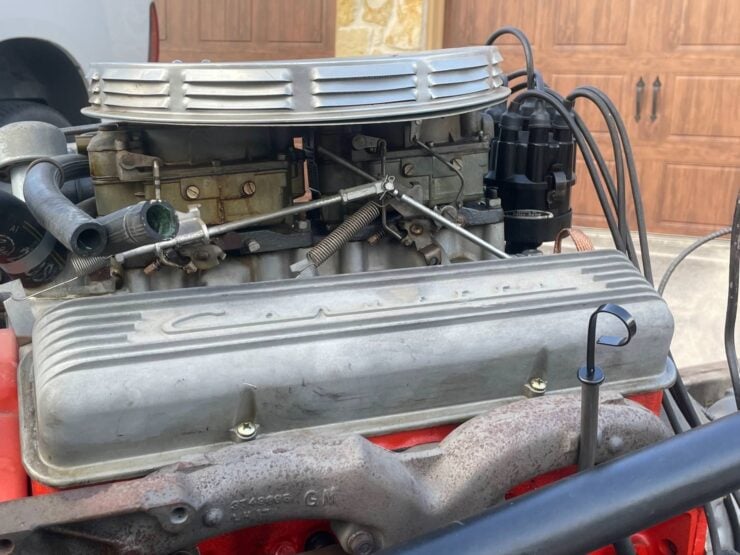
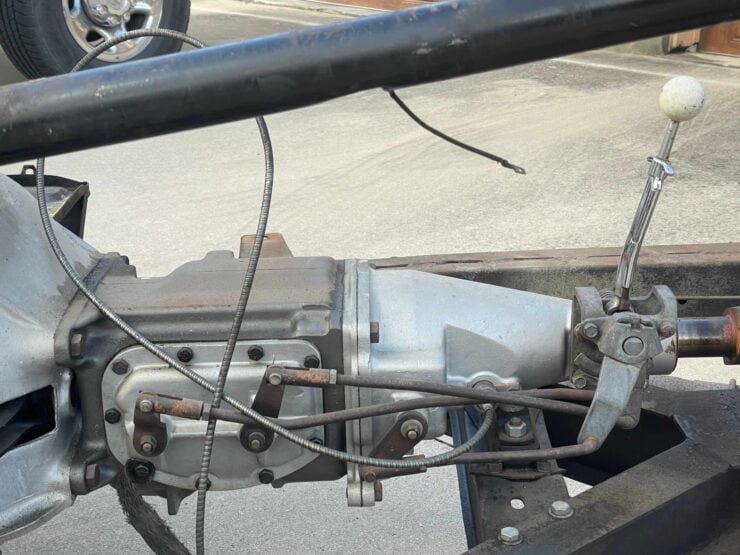
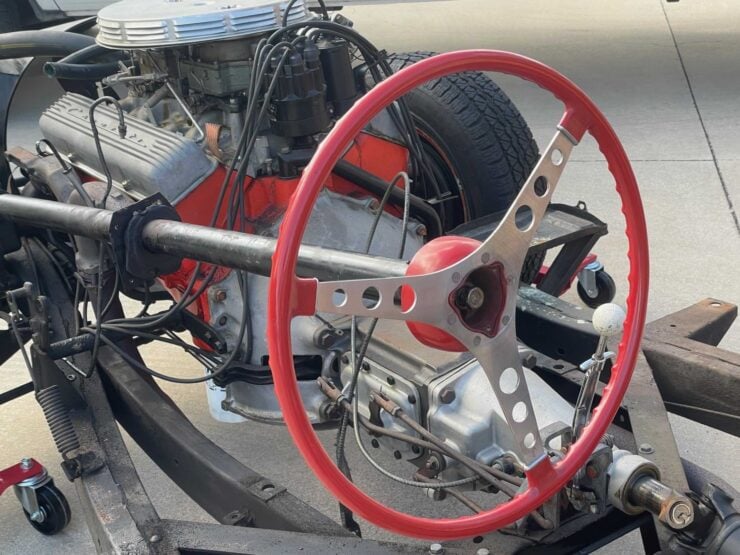


Images courtesy of Bring a Trailer

